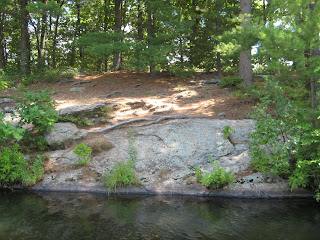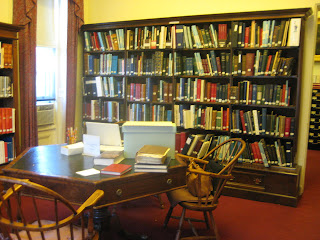Thursday, July 22, 2010
I wonder why I feel so comfortable in the "past", in 1800's era buildings and towns. Maybe it's because my family spent many happy hours when I was very young at Knott's Berry Farm, which at the time was just the old Ghost Town, the Indian Village, Old MacDonald's farm, and the Chicken Dinner Restaurant. Maybe my most recent "previous life" was lived in the second half of the 1800's. I just know that when I'm in a historical setting of that era, I'm happy. On this hot, sunny day in Massachusetts I was very happy indeed.
Old Sturbridge Village is the most complete reconstruction and re-enactment of a past time that I have ever visited. Consisting of over forty original buildings brought to the site from all over New England, the village includes shops, places of worship, homes, farms, mills and more. Knowledgeable, costumed staff go about their daily chores and lead tours of the buildings. One of my favorite things about Old Sturbridge Village was the children; day-campers dressed in period costume, learning period farming and manufacturing techniques, and playing period games. The sight, sound, and enthusiasm of these young people gave the village a "complete" feel that I haven't experienced in other historic reconstructions.
Young women baking from an old recipe book in the Small House, the first structure one comes to approaching the village.
View toward village from Small House, showing back of Fenno barn.
Center Meetinghouse
Tin Shop demonstration
Day-campers in period dress eating lunch and playing games
Yarn dyeing demonstration at Fenno Barn
Circular garden near Fenno exhibit. I would like to copy this format in my own small yard.
I love roosters.
Quinebaug River Boat Ride
I came across this girl leading the calf twice during my visit. The first time she told me that she was "socializing" it, getting it used to being around people so it would be able to grow up there. The second time I saw her she was trying to get it out of this pasture, and I asked if I could take their picture. She said "of course", but was then very apologetic that her eyeglasses were not of the period! I thought she and the calf (which I think was named Betsy) were very sweet.
 |
| The Freeman Farmhouse |
The rail fence ended at this lovely stone post.
The view from the top of the Pasture Walk.
I returned to the village via the Woodland Walk.
The kiln at the pottery.
After my slow-paced and quiet day spent at Old Sturbridge Village, I drove about 135 miles southwest, through the state of Connecticut to Fishkill, New York. I expected the Connecticut countryside to be beautiful, but I saw very little of it. The toll highway went through a corridor of trees most of the trip. Nothing to see but pavement, cars and trees. Whoopee. On top of that it's a toll road, so no interesting little towns to go through, just manufactured stops with chain gas stations and burger joints. Yuck. I could have taken a much more scenic route, I'm sure, but it would have taken much longer to drive and I was on a tight schedule. The next day, I would be at the races at Lime Rock Park!























































